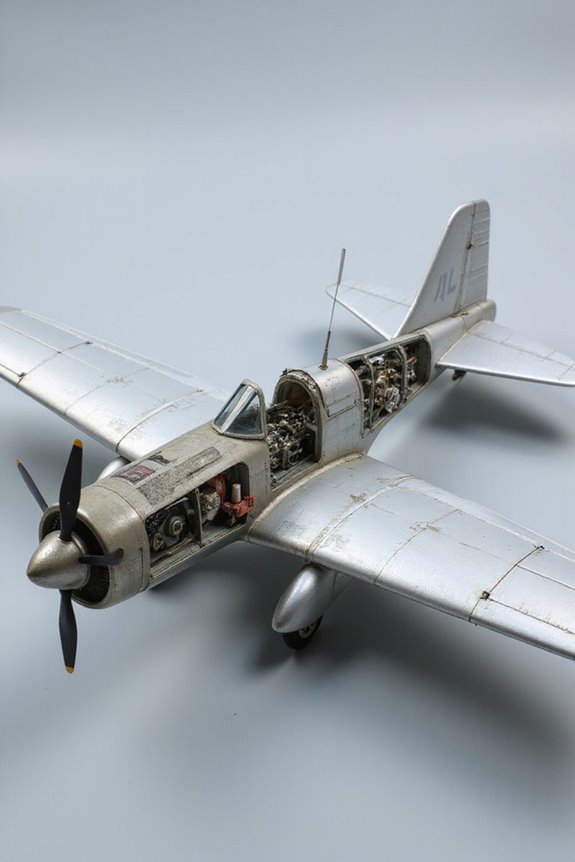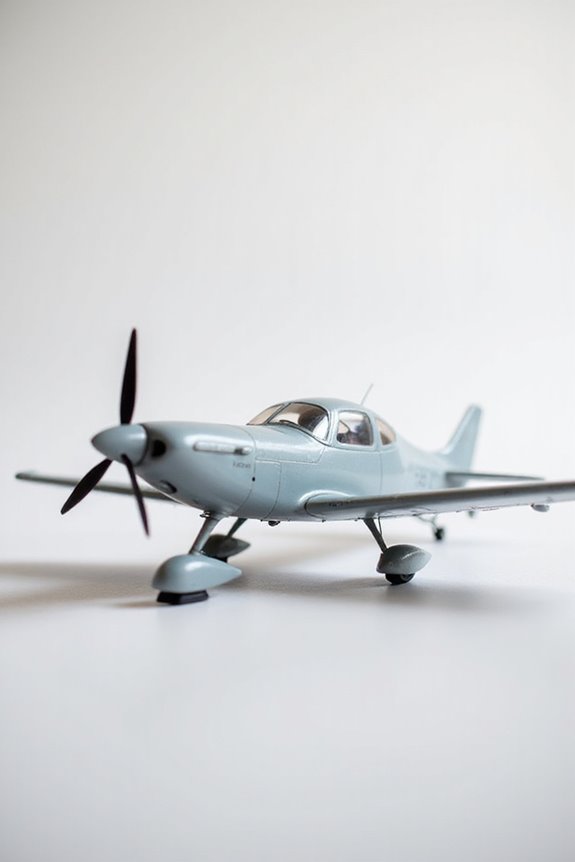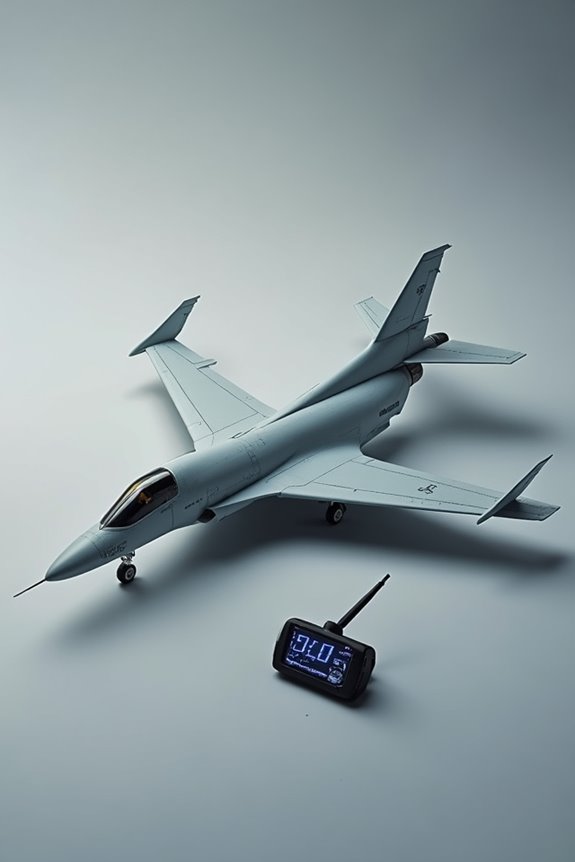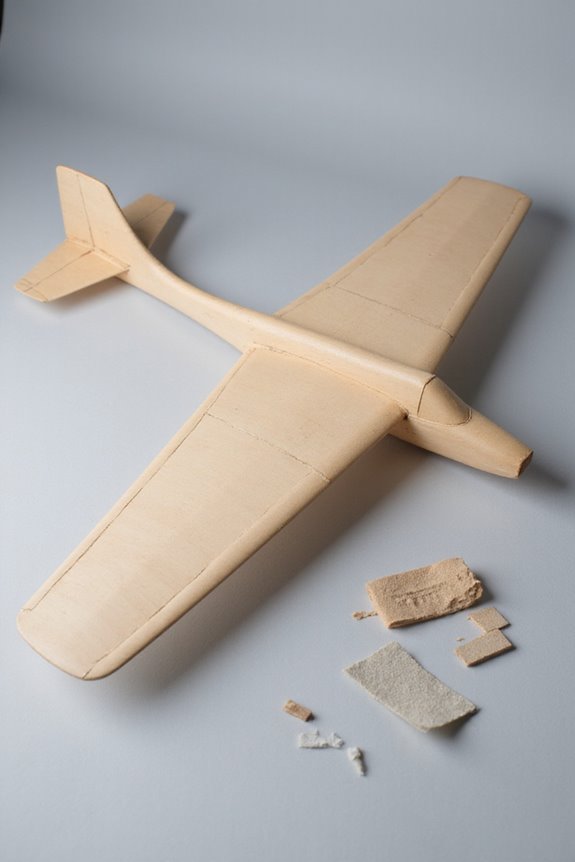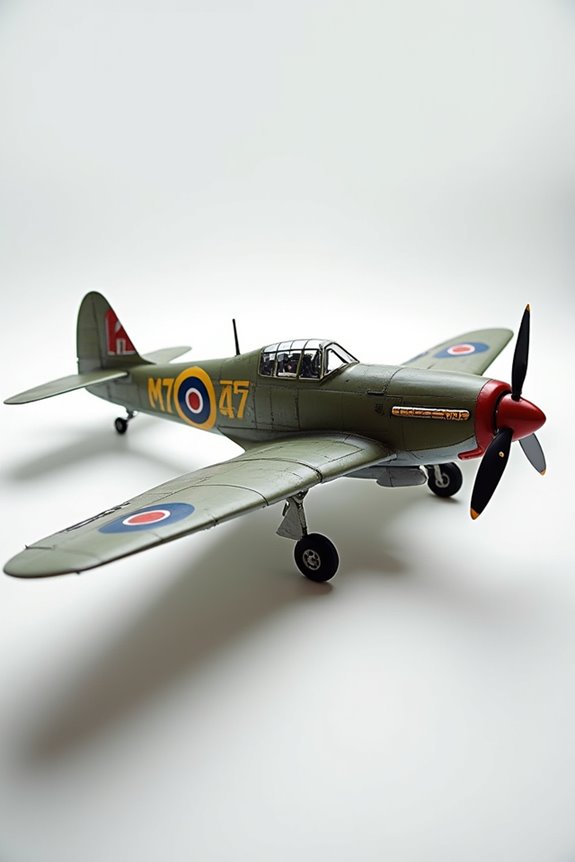Differential ailerons are a game-changer for aircraft handling. They work by allowing one aileron to move up more than the other moves down. This smart design reduces adverse yaw, making turns smoother and keeping us stable — like a well-timed rollercoaster! They also help prevent tip stalls, enhancing safety at high angles of attack. With benefits ranging from improved fuel efficiency to better control, it’s clear why differential ailerons are a must-have in aviation design. There’s more to uncover about their impact!
Key Takeaways
- Differential ailerons enhance roll authority, enabling smoother turns and improving overall flight experience.
- They reduce adverse yaw, balancing drag and enhancing aerodynamic efficiency during roll maneuvers.
- By decreasing the likelihood of tip stalls, they maintain roll control at high angles of attack, promoting flight safety.
- Their application spans various aircraft types, enhancing maneuverability and stability across different aviation sectors.
- Future innovations aim to further improve pilot experience, making flying more intuitive and reducing strain during operations.
Definition and Overview of Differential Ailerons
When we think about flying, one of the key elements really boils down to how we control the aircraft’s roll. Differential ailerons play a crucial role in this process. They’re designed with a clever differential design, which means one aileron moves up more than the other moves down when we pull on the control stick. This setup helps us maintain roll authority, making our turns smoother and more coordinated.
History shows us that differential ailerons have come a long way since their debut in planes like the de Havilland Tiger Moth. While they might seem like tiny flaps, they make a massive difference in our flying experience—much like how a good spatula can change the outcome of a pancake!
Mechanism of Adverse Yaw Reduction
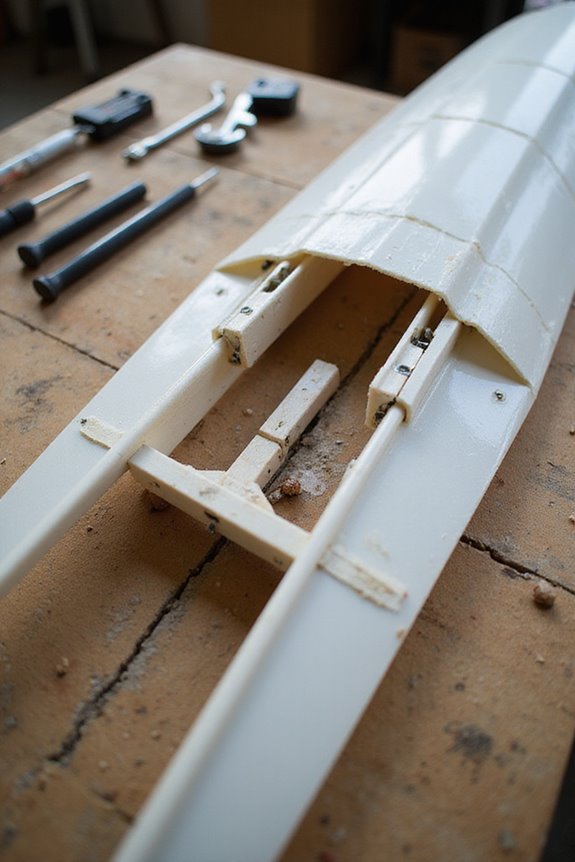
Differential ailerons are our secret weapon against the pesky problem of adverse yaw. When we roll, the upward-deflecting aileron creates extra drag on that wing. This added drag is crucial because it balances out the lift-induced drag on the wing that’s going down. Fundamentally, it keeps us from yawing opposite the direction we want to turn.
It’s like having an extra hand steering us in the right direction! With this setup, we can enjoy better roll stability and smooth shifts during maneuvers. Pilots find less need for rudder corrections, making flying more enjoyable and safe. Additionally, higher torque ratings can enhance the effectiveness of differential ailerons, providing more control during flight maneuvers. So, next time you’re gliding through the skies, remember, those quirky ailerons have our backs against adverse yaw!
Impact on Tip Stall Prevention
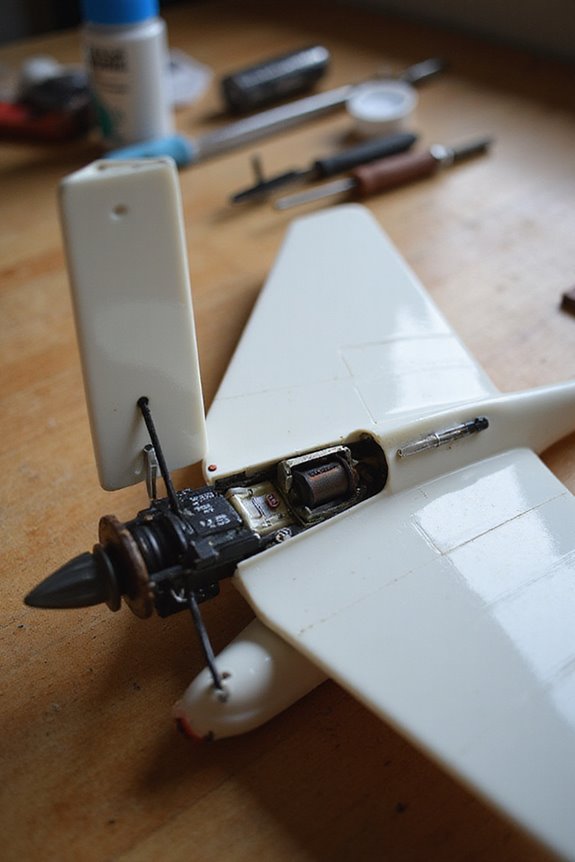
While we may not think about it every time we take to the skies, tip stall prevention is a crucial factor in keeping our flights safe and enjoyable. Differential ailerons play a fantastic role in this. By deflecting the up aileron more than the down one, they reduce the likelihood of a tip stall when we’re at high angles of attack. This means we can maintain roll control even if the wing starts to stall.
It’s like controlling a seesaw—too much lift on one side makes it flip! So, these safety enhancements not only delay stronger stalls but also keep our flying smoother. With differential ailerons, the skies feel a bit friendlier and far less intimidating!
Enhancing Aerodynamic Efficiency
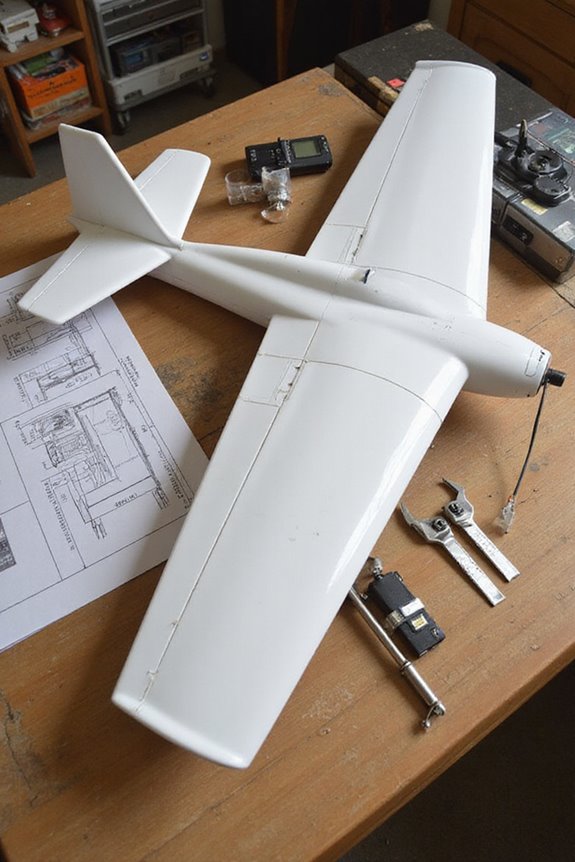
By cleverly managing how the aircraft rolls and yaws, we can greatly enhance aerodynamic efficiency. Differential ailerons minimize adverse yaw, keeping our flight smooth like butter on hot toast. This means reduced drag and better fuel economy—an aerodynamic advantage we can all appreciate!
With ailerons deflecting proportionately, we strike a balance between lift and drag. The result? Consistent roll rates and easier turns. Remember the last road trip where the GPS made all the right moves? That’s what differential ailerons do in the air.
They also lower the pilot’s workload, which is like having a co-pilot who never nags. Through these efficiency improvements, we can enjoy not just better handling but also lower fuel costs. Who wouldn’t want that? Additionally, features like built-in 6-axis gyroscopes in some RC planes enhance flight stability and further optimize performance.
Operational Flexibility in Various Flight Conditions
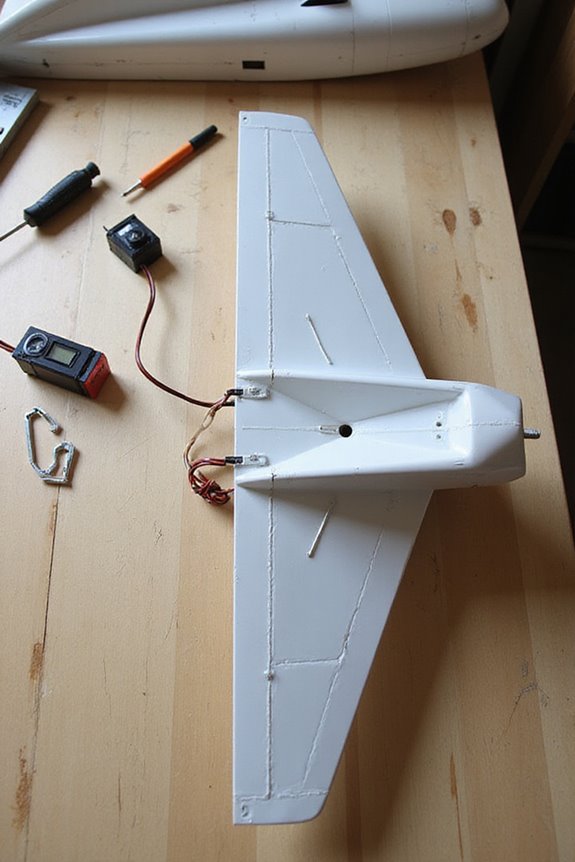
When it comes to maneuvering the skies, having flexibility in various flight conditions can feel like a secret superpower. Differential ailerons help improve flight stability by reducing adverse yaw, allowing us to maintain directional control during turns. This added control gives us more precise roll rates and makes the aircraft easier to handle, especially in tricky situations like crosswinds.
Picture this: with these ailerons, we can adjust our roll faster, just like a skilled dancer gracefully twirling. Plus, they let us tackle turbulent conditions with confidence, keeping our flight path steady. So, with better pilot control and consistent roll performance, we’re ready for whatever the skies throw our way! Additionally, gyro stabilization systems enhance the flying experience, particularly for beginner pilots.
Application Range Across Aircraft Types
Differential ailerons find their niche across a variety of aircraft types, proving that great things come in all shapes and sizes. In general aviation, these ailerons are like a trusty sidekick, improving roll control and reducing adverse yaw. They’re not just for the casual flier; military applications often see differential ailerons in trainers and tactical planes to enhance maneuverability.
Even light sport aircraft use them for stability, while classic biplanes, like the de Havilland Tiger Moth, wow us with their vintage charm and advanced control. Experimental aircraft also embrace innovative designs, pushing boundaries in flight control. So, whether you fly for pleasure or duty, differential ailerons have a little something to offer every aviation enthusiast!
Design and Mechanical Implementation
Aileron design isn’t just about moving flaps; it’s a carefully thought-out balance of forces. We leverage design principles to control aircraft roll effectively. With differential ailerons, the upward deflecting aileron moves more than the downward one. This unique setup helps reduce adverse yaw—nobody wants to be flying sideways!
Mechanical systems play an essential role here. Older aircraft often use linkages and pushrods, ensuring precise control. Meanwhile, more advanced planes may utilize hydraulic systems for improved responsiveness. Think of it as the difference between a smooth jazz tune and a kids’ band! It’s all about adjusting the setup to fit different aircraft types and flight conditions. Each tweak helps keep us soaring smoothly through the skies.
Historical Development and Use Cases
As we plunge into the historical development of differential ailerons, it’s fascinating to see how creative minds shaped the way we fly today. We had some unique milestones along the journey. Back in the late 1800s, Otto Lilienthal used weight shifting for control, while the Wright brothers relied on wing warping, not ailerons. It wasn’t until French engineer Esnault-Pelterie introduced hinged ailerons in 1904 that we saw a real breakthrough in roll control. This innovation spread quickly—by 1911, ailerons became standard equipment for biplanes. Then came the magic of differential ailerons. They helped cut down on adverse yaw, creating a smoother flight experience. Today, they’re essential for nearly every aircraft, proving their worth time and time again!
Advanced Control and Handling Characteristics
Roll control has come a long way since the days of Otto Lilienthal and wing warping. With differential ailerons, we’re enjoying advanced maneuverability like never before. By deflecting the upward aileron more, we minimize that pesky adverse yaw, making turns much smoother.
This means we get precise control without constantly fighting against the aircraft’s natural tendencies. Imagine trying to steer a kayak with one paddle — tricky, right? That’s what flying felt like before!
Now, our roll responses stay consistent, allowing us to dance through the skies confidently. With efficient drag profiles, we not only enhance handling precision but also boost fuel efficiency. It’s like getting a sports car with better mileage! Additionally, multiple flight modes enable pilots of varying skill levels to experience these benefits fully. So, let’s embrace this incredible technology for an exhilarating flight experience.
Future of Differential Aileron Technology
While we might not be flying cars just yet, the future of differential aileron technology is shaping up to be incredibly exciting. Imagine active surfaces that can adjust in real-time based on flight conditions. These advanced systems could reduce pilot workload, making flying feel almost like a video game!
We’ll also see adaptive materials that change shape with aerodynamic forces. This means lighter, stronger ailerons that last longer and perform better. Plus, coupling differential ailerons with AI algorithms can help dynamically tune their function for maximum efficiency.
From commercial airliners to UAVs and even eVTOLs, the possibilities are endless. The innovations in differential aileron technology promise to enhance safety, efficiency, and maneuverability—no flying cars needed!
Frequently Asked Questions
How Do Differential Ailerons Affect Fuel Efficiency During Flight?
When we consider how differential ailerons affect fuel efficiency during flight, we find significant fuel savings. Their design promotes aerodynamic efficiency, reducing drag and enhancing overall performance, making our flights smoother and more economical.
Are Differential Ailerons More Complex Than Standard Ailerons?
Like a double-edged sword, differential ailerons indeed bring added design complexity. Their intricate control dynamics enhance performance but require careful engineering, making them more complex than standard ailerons in both function and maintenance demands.
Can Differential Ailerons Be Retrofitted Onto Older Aircraft Models?
Retrofitting differential ailerons onto older aircraft can pose challenges, especially regarding aircraft compatibility. We must guarantee mechanical linkages align properly, addressing both performance improvements and potential complexities in the aircraft’s existing systems during the process.
What Maintenance Considerations Exist for Differential Aileron Systems?
Maintaining differential aileron systems is like fine-tuning a musical instrument; regular maintenance schedules and careful observation of wear patterns guarantee peak performance. We must prioritize inspections and lubrication to prevent stiffness and guarantee flight safety.
Do Differential Ailerons Impact Aircraft Speed or Performance Limits?
In contemplating differential ailerons, we find they enhance aerodynamic stability and improve control response markedly. This optimization directly impacts aircraft speed and performance limits, making our flying experience safer and more efficient overall.

